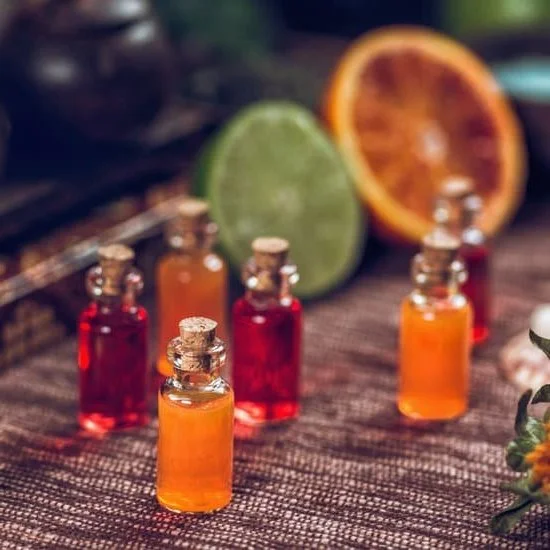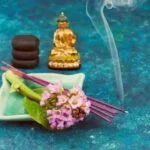Aromatherapy has been used for centuries as a natural healing remedy, and essential oils are at the heart of this practice. These highly concentrated plant extracts are used in various ways to promote physical, emotional, and mental well-being. In this article, we will explore the world of aromatherapy essential oils and how to use them effectively to bring balance and harmony into your life.
When it comes to aromatherapy, essential oils are the key ingredients that unlock the therapeutic properties of plants. In this section, we will delve into the origins of aromatherapy and provide an introduction to essential oils. Understanding the basics of aromatherapy and essential oils is crucial before you embark on your aromatic journey.
We will discuss the history of aromatherapy, how essential oils are extracted from plants, and the different types of essential oils commonly used in aromatherapy. By gaining a foundational understanding of these key elements, you will be better equipped to make informed choices when using essential oils for aromatherapy.
Whether you are new to aromatherapy or looking to deepen your knowledge, this section will serve as a valuable guide on your path to harnessing the power of essential oils for holistic well-being.
Choosing the Right Essential Oils for Aromatherapy
Understanding Essential Oils
Before delving into choosing specific essential oils, it’s important to understand what they are and how they are made. Essential oils are derived from plants through methods such as distillation or cold pressing. Each essential oil contains unique properties that contribute to their therapeutic effects. It’s important to note that pure, high-quality essential oils should be used in aromatherapy for optimal results.
Factors to Consider When Choosing Essential Oils
When selecting essential oils for aromatherapy, there are several factors to consider. Firstly, consider the aroma and scent profile of the oil. Some people may prefer floral scents, while others may lean towards more earthy or citrusy aromas.
Additionally, consider the therapeutic properties of the oil and how they align with your specific needs. For example, if you’re looking for relaxation, you may opt for lavender or chamomile essential oil, while peppermint or eucalyptus oil may be more suitable for boosting energy and focus.
Researching and Experimenting
In order to choose the right essential oils for your aromatherapy practice, it’s important to do thorough research and perhaps even some experimentation. Take the time to learn about different essential oils and their benefits, as well as any potential contraindications or safety concerns.
You can also experiment with different single oils or blends to see which ones resonate best with you personally. It’s all about finding what works best for your individual preferences and needs when embarking on your journey in using aromatherapy with essential oils.
Methods of Using Essential Oils in Aromatherapy
Aromatherapy has gained popularity in recent years as a natural and holistic approach to health and wellness. Essential oils are at the heart of aromatherapy, and there are various methods for using them to experience their therapeutic benefits. Here, we will explore different ways to use essential oils in aromatherapy, including diffusers, massage oils, and more.
Diffusers
Using a diffuser is one of the most popular methods for enjoying the benefits of essential oils. There are several types of diffusers available, including ultrasonic, nebulizing, heat, and evaporative diffusers. Each type has its own unique way of dispersing the aroma of the essential oils into the air. Whether you want to create a calming atmosphere in your home or alleviate symptoms of a cold or flu, using a diffuser can help enhance your overall well-being.
Massage Oils
Another effective method for utilizing essential oils in aromatherapy is by incorporating them into massage oils. When combined with a carrier oil such as jojoba or sweet almond oil, essential oils can be applied topically during a massage session. This allows for both inhalation and absorption of the aromatic compounds into the body, providing a dual benefit for relaxation and stress relief.
Inhalation
Inhalation is arguably the simplest way to experience the effects of essential oils. By adding a few drops of essential oil to a bowl of hot water or using a portable inhaler device, you can easily inhale the aroma of the oil. This method is ideal for targeting respiratory issues or simply creating an uplifting ambiance at home or in your workspace.
These various methods demonstrate how versatile essential oils are when incorporated into aromatherapy practices. No matter which method you choose to use, always remember to follow safety precautions and best practices when working with essential oils to ensure an enjoyable and effective experience.
The Science Behind Aromatherapy and Essential Oils
Aromatherapy is the practice of using essential oils to promote overall well-being and health. But how exactly do these essential oils work? The science behind aromatherapy revolves around the powerful compounds found in these natural oils that have a direct impact on our bodies and minds.
Essential oils are highly concentrated extracts derived from plants, flowers, and herbs. These oils contain various chemical compounds that interact with our body’s olfactory system, which includes the nose and the brain. When inhaled, these compounds can trigger different responses in the body, such as relaxation, stress reduction, or even an energy boost.
To understand how essential oils work in aromatherapy, it’s important to know that once inhaled, the aroma molecules of the essential oils stimulate the olfactory nerve receptors. These receptors then send signals to the limbic system in the brain, which is responsible for emotions and memories. This process can elicit specific emotional or physical responses, depending on the type of essential oil being used.
Moreover, some essential oils also have antibacterial, antifungal, or anti-inflammatory properties when applied topically. When these oils are absorbed through the skin during massage or other topical applications, they can provide additional therapeutic benefits. Overall, understanding how essential oils work in aromatherapy helps individuals make informed choices about which oils to use and how to use them effectively for their specific needs.
- Understanding the chemical compounds in essential oils that affect our bodies
- The role of the olfactory system and limbic system in processing essential oil aromas
- Different ways essential oils can be used for therapeutic purposes
Safety Precautions and Best Practices When Using Essential Oils for Aromatherapy
Aromatherapy is a popular practice that involves using essential oils to promote physical and psychological well-being. However, it is crucial to understand the safety precautions and best practices when using essential oils for aromatherapy to ensure a positive and safe experience.
Firstly, it is essential to always dilute essential oils before applying them to the skin. Undiluted essential oils can cause irritation or allergic reactions, so it is important to mix them with a carrier oil such as coconut or jojoba oil. The recommended dilution ratio is usually 2-3 drops of essential oil per teaspoon of carrier oil. This helps to minimize the risk of adverse reactions and ensures that the essential oils are safe for topical use.
Another important safety precaution is to perform a patch test before using an essential oil on a larger area of the skin. This involves applying a small amount of diluted essential oil to the inner forearm and waiting 24 hours to check for any signs of irritation or allergic reaction. This can help identify any potential sensitivity to specific oils and prevent more significant issues from occurring.
When using essential oils in a diffuser, it’s important not to use too much oil at once. Overexposure to strong aromas can cause headaches, dizziness, or nausea in some individuals. It’s best to start with just a few drops of essential oil in the diffuser and increase as needed based on personal preference.
| Safety Precautions | Best Practices |
|---|---|
| Always dilute essential oils before applying topically | Perform a patch test before using new essential oils |
| Avoid overexposure by using too much oil in diffusers | Store essential oils out of reach of children and pets |
By following these safety precautions and best practices, you can enjoy all the benefits of aromatherapy while minimizing any potential risks associated with using essential oils.
Blending Essential Oils for Aromatherapy
Understanding the Basics of Blending Essential Oils
When it comes to blending essential oils for aromatherapy, it’s important to understand the basics. Each essential oil has its own unique properties and characteristics, so it’s important to consider these when creating a blend. Some essential oils may have calming effects, while others may be invigorating or uplifting. By understanding the different properties of each oil, you can create a blend that meets your specific needs.
Choosing the Right Combinations
One of the key aspects of blending essential oils is choosing the right combinations. Some oils work well together, complimenting each other’s scents and therapeutic properties. For example, lavender and chamomile are often blended together for their calming and soothing effects. On the other hand, citrus oils like lemon and orange can be blended for an energizing and uplifting scent. It’s important to experiment with different combinations to find what works best for you.
Creating Personalized Aromatherapy Blends
Once you have a good understanding of individual essential oils and their properties, as well as how different oils complement each other, you can start creating personalized aromatherapy blends. Whether you’re looking to relax after a long day, boost your mood in the morning, or relieve stress and anxiety, there are endless possibilities when it comes to blending essential oils for aromatherapy. Experiment with different combinations until you find the perfect scent that suits your needs.
By following these guidelines on how to aromatherapy essential oils properly blended according to individual preference will ultimately enhance one’s overall well-being through this practice.
Benefits of Aromatherapy With Essential Oils
Aromatherapy has been used for centuries as a holistic healing treatment, harnessing the power of essential oils to improve physical, mental, and emotional well-being. When it comes to the benefits of aromatherapy with essential oils, the healing power of scent cannot be understated. Essential oils are potent plant extracts that have been proven to have therapeutic properties, and when used in aromatherapy, they can have a profound impact on our health.
One of the key benefits of aromatherapy with essential oils is their ability to reduce stress and anxiety. Certain essential oils such as lavender, rose, and chamomile have been shown to promote relaxation and calm the mind. Through the inhalation of these soothing scents, the limbic system in the brain is activated, which can help alleviate feelings of stress and promote a sense of well-being.
In addition to their calming effects, essential oils used in aromatherapy also have potential pain-relieving properties. Oils like peppermint and eucalyptus possess analgesic and anti-inflammatory qualities that can help alleviate headaches, muscle aches, and joint pain when used in aromatherapy massage or diffused into the air.
Moreover, some essential oils used in aromatherapy have antimicrobial properties that can help support overall immune function. Oils such as tea tree, eucalyptus, and lemon have been traditionally used for their ability to purify the air and support respiratory health. This makes them valuable tools for warding off common colds and promoting overall wellness.
| Benefit | Effect |
|---|---|
| Stress Reduction | Promotes relaxation and calmness by activating the limbic system |
| Pain Relief | Alleviates headaches, muscle aches, and joint pain through analgesic properties |
| Immune Support | Purifies air and supports respiratory health for overall wellness |
Incorporating Aromatherapy Into Your Daily Routine
One of the key tips for incorporating aromatherapy into your daily routine is to start by choosing the right essential oils that cater to your specific needs. Different essential oils have unique properties and effects, so it’s important to do some research on which ones will best suit your lifestyle and goals.
Whether you’re looking for a natural way to boost energy in the morning or unwind after a long day at work, there are essential oils that can help achieve these purposes.
Furthermore, integrating aromatherapy into your daily routine can be as simple as adding a few drops of essential oil to a warm bath or diffusing it in the air while you work or relax. The key is to find what works best for you and experiment with different methods until you discover the most effective way for you.
With time and practice, incorporating aromatherapy into your daily routine will become second nature, allowing you to experience its maximum benefits effortlessly. By following these tips and tricks, you can enjoy the therapeutic benefits of essential oils throughout the day.
Frequently Asked Questions
How Do You Use Essential Oils as Aromatherapy?
Essential oils can be used for aromatherapy by diffusing them into the air using a diffuser, adding a few drops to a warm bath, or mixing with a carrier oil and applying topically to the skin. The scent of the oils can help improve mood, reduce stress, and promote relaxation.
How Do You Dilute Essential Oils for Aromatherapy?
When diluting essential oils for aromatherapy, it’s important to use a carrier oil such as coconut oil or almond oil. The general recommendation is to use 1-3 drops of essential oil per teaspoon of carrier oil for topical application, or follow the specific instructions provided with the essential oil.
How Do I Do Aromatherapy?
To do aromatherapy, start by choosing an essential oil that corresponds with your desired outcome (e.g., lavender for relaxation). You can inhale the scent directly from the bottle, use a diffuser to spread the aroma throughout the room, or add a few drops to a warm bath. The inhalation of the scents can have calming and mood-improving effects.

Are you looking for a natural way to improve your health and wellbeing?
If so, aromatherapy may be the answer for you.





